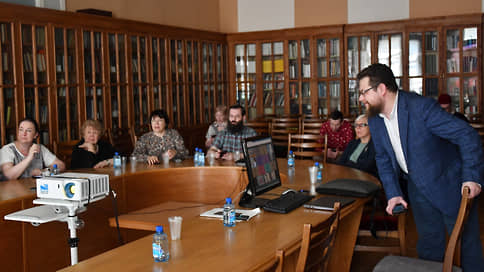The Moscow State Institute of Art Studies held a round table “The Holy Trinity” by Andrey Rublev: problems of conservation and exhibition
[ad_1]

The Moscow State Institute of Art History hosted a round table “The Holy Trinity” by Andrey Rublev: problems of conservation and exhibiting. Leading specialized specialists, art critics, restorers, representatives of central museums took part in it in person and via video link. Tells Sergey Hodnev.
As for the administrative side of the current state of affairs with the Trinity, there were two climaxes in the events of the round table. The first is the opening speech by Mikhail Piotrovsky (via video link). The director of the State Hermitage, however, at first tried to absolutize the problem by talking about global processes that threaten the traditional museum community (“re-sacralization, de-secularization, in general, archaization as a trend in the development of society”). But then, turning to the “Trinity”, he unexpectedly expressed surprise at why in this case the “protocol” that was followed when the tomb of Alexander Nevsky was transferred to the Alexander Nevsky Lavra was not observed.
Apparently, the main part of this “protocol” is the careful preparation of the transfer agreement: with him, in the case of the tomb of the holy prince (according to Mikhail Piotrovsky), everything really happened in such a way that no one lost face. And now the Hermitage is slowly examining all kinds of indicators of the Trinity Cathedral of the St. Petersburg Lavra in order to prepare a technical assignment later. And the terms of reference will be as if “we are just exhibiting our exhibit in the Lavra”: safety, temperature and humidity conditions – all this should be at the museum level, the shrine itself will most likely be closed for safety with a “glass dome”, and the contract establishes the rights of the museum, in which case, to withdraw the tomb back and even take it to exhibitions. Because, as the director of the Hermitage emphasized, “there are no “museum requirements” – there are requirements that ensure the preservation of the monument,” and, accordingly, the church side must adhere to them. Those present did not say anything about this, but in terms of the preparation of contractual documents regarding the Trinity, everything, apparently, really happened less smoothly and logically.
At least in part, this could be understood from the speech of Yulian Khalturin, head of the Tretyakov Gallery’s Department of Complex Studies. He finally said that the complexly prepared current agreement on the transfer of the Rublev icon to the Lavra is tripartite – between the Tretyakov Gallery, the Grabar Center (where the icon is now) and the Trinity-Sergius Lavra. Moreover, firstly, the Tretyakov Gallery is obliged to monitor the condition of the icon once every three months, and once a year to examine it carefully and comprehensively (equipment and premises for this should be provided by the Lavra). Secondly, and most importantly, a necessary condition for the transfer of the icon to the Lavra is the creation of a climate capsule for it (also funded by the monastery, which is interesting). But for this, at least it is necessary to prepare a technical task, and its development has barely begun.
Naturally, they talked about the current preservation of the monument. In this sense, the speech of Dmitry Sukhoverkov, restorer of the Tretyakov Gallery, turned out to be the most substantive: on the one hand, he rejected the popular myth that nothing was left of the original Trinity, everything was fabricated by restorers of the 20th century. The degree of preservation of the author’s painting, albeit “shabby”, is 80%, which is a lot for an icon with a difficult fate. On the other hand, on macrophotographs, he methodically demonstrated cracks, swelling, delamination and loss with such clarity that there is no reason to doubt the desperate state of the Trinity. There is one problem: this is all the data even before the icon was transported to the Cathedral of Christ the Savior, a detailed examination of it after its stay there has not yet been carried out. The “beacons” made of tissue paper, glued to the cracks between the icon boards on the reverse side, did not break, but sagged, that is, until the cracks parted for sure – but it is difficult to draw far-reaching conclusions from this, they require months of constant observation.
What is completely clear even now (in particular, according to the report of Ekaterina Gladysheva from the same Tretyakov Gallery) is that the icon can hardly be located in the Trinity Cathedral of the Trinity-Sergius Lavra. This is a tiny room without proper protection and without a museum climate, with a daily wave of pilgrims and burning candles; the icons of the iconostasis there, and in addition to the “Trinity”, it would be most reasonable to take them out, replace them with exact lists and museumify them – otherwise they will have to be cleaned from the soot decade after decade, but this cannot be done indefinitely, they crumble without, as it turns out. How to install a brand new capsule with the Trinity in this small precious space so that it, illuminated according to museum standards, does not look wild and foreign there, is incomprehensible. But how, on the other hand, to comply with the terms of the already signed agreement, which presupposes the Trinity Cathedral as the place of residence of the icon, also remains unclear.
[ad_2]
Source link






